MIT Prof. Donald Sadoway thinks he’s found a way to build electric-grid-scale batteries out of dirt.
Electric utilities complain solar and wind power are not baseload, capacity, energy sources because they are intermittent. You know, if they weren’t busy running up cost overruns that could easily exceed the entire annual budget of the state of Georgia, maybe the utilities could solve this problem. Meanwhile, Prof. Sadoway, instead of looking for the snazziest coolest most efficient new method of energy storage, defined the problem in terms of the market:
the demanding performance requirements of the grid, namely uncommonly high power, long service lifetime, and super low cost. We need to think about the problem differently. We need to think big. We need to think cheap.
Then he set parameters on the solution:
If you want to make something dirt cheap, make it out of dirt. Preferably dirt that’s locally sourced.
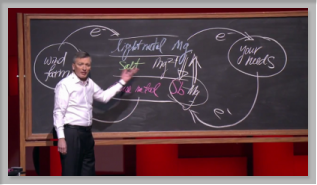 He cast about for possible precedents and found aluminum smelting gave him some ideas for using low density liquid metal at the top, high density liquid metal at the bottom, and molten salt in between. Choosing the right metals is the trick, which he thinks he’s found: magnesium at the top, and antimony at the bottom.
He cast about for possible precedents and found aluminum smelting gave him some ideas for using low density liquid metal at the top, high density liquid metal at the bottom, and molten salt in between. Choosing the right metals is the trick, which he thinks he’s found: magnesium at the top, and antimony at the bottom.
Is Sadoway right? Will his battery work at grid scale? I don’t know. But he’s asking the right questions, and it’s worth a try.
As Kyle Sager wrote for Heliocurrent 4 May 2012, Renewable Storage: Leave it to MIT,
Has Dr. Sadoway achieved the holy grail of renewable energy? Judge for yourself. Our attention is compelled by the degree of his certainty and the seeming simplicity of the approach. Watch MIT’s Donald Sadoway explain his vision here (link).
Seems to me there are at least two major approaches:
-
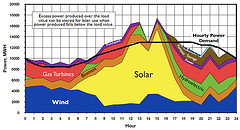 Widely distribute solar on rooftops like IKEA is doing and use a smart grid to get electricity from sunny places to cloudy places like Prof. Blackburn of South Carolina recommended.
Widely distribute solar on rooftops like IKEA is doing and use a smart grid to get electricity from sunny places to cloudy places like Prof. Blackburn of South Carolina recommended. - Invent better electricity storage, as Prof. Sadoway is doing.
- Oh, or do both.
I thoroughly agree with this part of what Prof. Sadoway said:
If we’re going to get this country out of its current energy situation, we can’t just conserve our way out, we can’t drill our way out, we can’t bomb our way out, we’re going to do it the old-fashioned American way: we’re going to invent our way out, working together.
[applause]
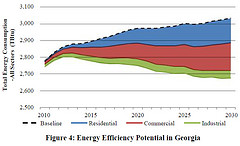 Now I’m all for conservation. With conservation, there would be no need for any new baseload power plants in Georgia. With conservation, no nukes! But conservation alone isn’t enough to take Plant Scherer, the country’s dirtiest coal plant, off line. For that, we need solar and wind and a smart grid, and grid-scale battery storage sure wouldn’t hurt.
Now I’m all for conservation. With conservation, there would be no need for any new baseload power plants in Georgia. With conservation, no nukes! But conservation alone isn’t enough to take Plant Scherer, the country’s dirtiest coal plant, off line. For that, we need solar and wind and a smart grid, and grid-scale battery storage sure wouldn’t hurt.
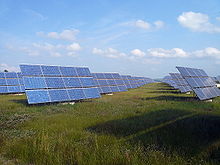 Meanwhile, as Germany has demonstrated, the right thing to do is to just get on with deploying solar and wind. Most of solar power comes mid-day when it’s needed most anyway, and wind can fill in much of the rest. As renewable energy supply increases, either smart grid distribution plus demand response will prove sufficient, or increasing demand for storage will eventually produce a solution, maybe Prof. Sadoway’s solution, or maybe some other one.
Meanwhile, as Germany has demonstrated, the right thing to do is to just get on with deploying solar and wind. Most of solar power comes mid-day when it’s needed most anyway, and wind can fill in much of the rest. As renewable energy supply increases, either smart grid distribution plus demand response will prove sufficient, or increasing demand for storage will eventually produce a solution, maybe Prof. Sadoway’s solution, or maybe some other one.
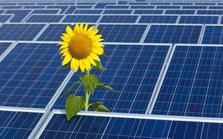 But let’s get on with solar and wind, for jobs, energy independence, and profit. And by the way clean air, clean and abundant water, and fixing climate change. Who doesn’t want all that for themselves and their children?
But let’s get on with solar and wind, for jobs, energy independence, and profit. And by the way clean air, clean and abundant water, and fixing climate change. Who doesn’t want all that for themselves and their children?
-jsq
Short Link: